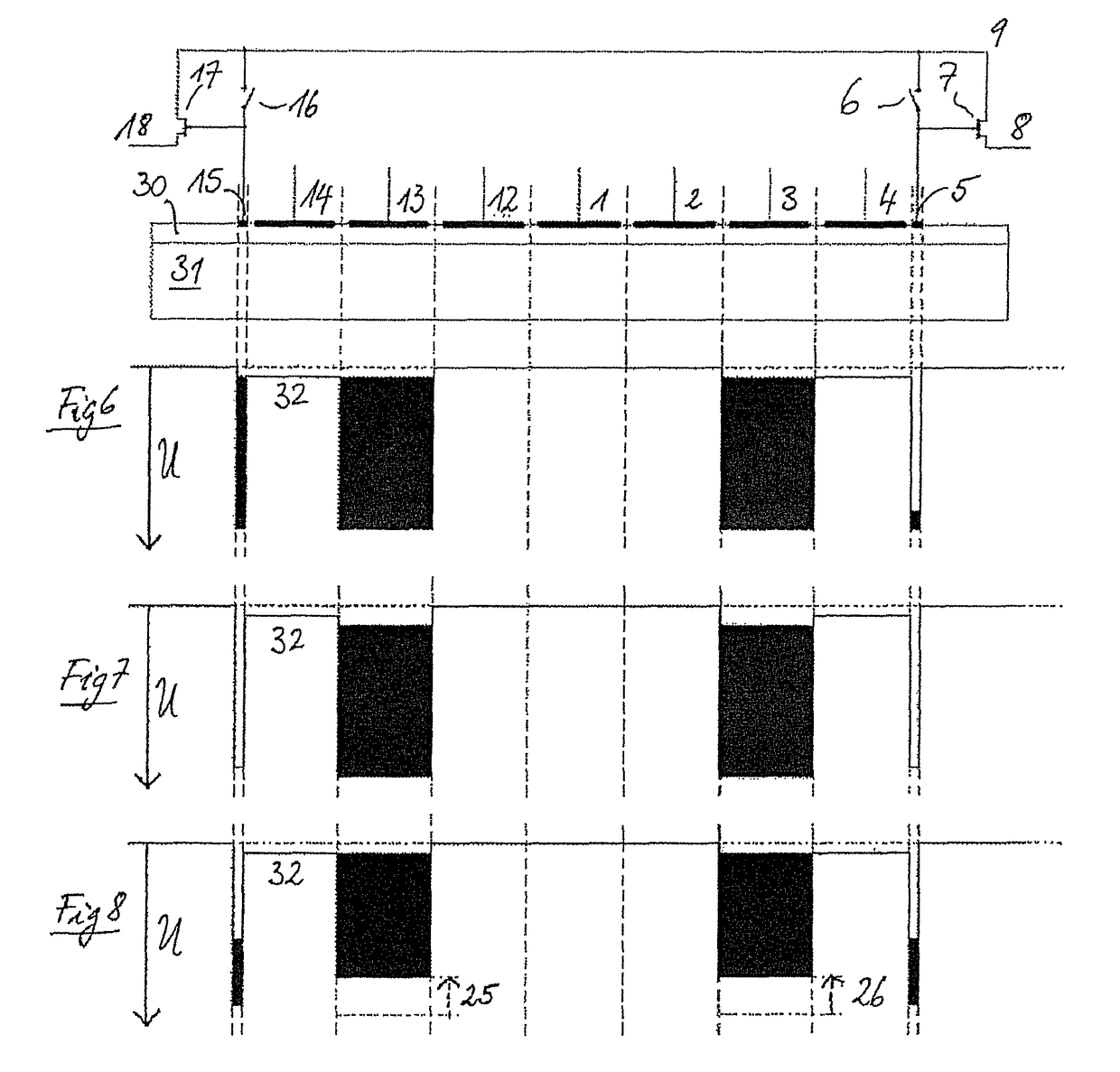Method for operating a time-of-flight imager pixel
a time-of-flight imager and pixel technology, applied in the field of time-of-flight imaging, can solve the problems of corrupted calculated time-of-flight, unrecognisable, and unnoticeable saturation of the integration ga
- Summary
- Abstract
- Description
- Claims
- Application Information
AI Technical Summary
Benefits of technology
Problems solved by technology
Method used
Image
Examples
Embodiment Construction
[0029]FIG. 1 shows a cross-sectional schematic of a pixel of a time-of flight imager, with a light-sensitive middle gate 1, a right light-sensitive gate 2, a right integration gate 3, a right output gate 4, a right sense node 5, a right reset switch 6, a right source follower 7, a right output 8, and a left light-sensitive gate 12, a left integration gate 13, a left output gate 14, a left sense node 15, a left reset switch 16, a left source follower 17, and a left output 18. Reference numeral 9 designates the positive supply voltage, 30 the gate oxide. The bulk material 31 is preferably p-doped.
[0030]FIG. 1 also shows a first potential distribution 32 inside the pixel, which is created by applying the appropriate voltages to the gates 1, 2, 3, 4, 5, 12, 13, 14, 15. U designates the voltage axis. The potential distribution in FIG. 1 is such that the electrons, which are generated by the light falling on the light-sensitive gates 1, 2 and 12 are deviated to the left and are collected ...
PUM
 Login to View More
Login to View More Abstract
Description
Claims
Application Information
 Login to View More
Login to View More - R&D
- Intellectual Property
- Life Sciences
- Materials
- Tech Scout
- Unparalleled Data Quality
- Higher Quality Content
- 60% Fewer Hallucinations
Browse by: Latest US Patents, China's latest patents, Technical Efficacy Thesaurus, Application Domain, Technology Topic, Popular Technical Reports.
© 2025 PatSnap. All rights reserved.Legal|Privacy policy|Modern Slavery Act Transparency Statement|Sitemap|About US| Contact US: help@patsnap.com



